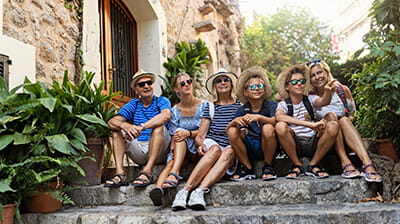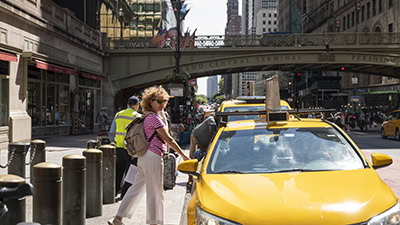
Having diabetes doesn’t prevent you from travelling; you can still explore freely. However, it’s essential to plan ahead, including obtaining travel insurance specifically for diabetes. This insurance provides peace of mind during your trip. But what exactly does it cover? Let’s explore.
If you have diabetes, it’s crucial to ensure your travel insurance policy includes coverage for this condition. This way, you’ll be protected in case any medical issues, treatments, or travel expenses related to diabetes arise during your holiday. Additionally, if you become ill due to diabetes before your holiday and can no longer travel, the insurance will cover the total cost of your trip as long as you included cancellation cover.
If you travel without cover and get ill because of your diabetes, bills for medical treatment can be costly.
While you can freely travel with diabetes, complications can arise, which is why coverage is essential. Potential issues include:
Managing blood sugar levels can be more complex when travelling abroad, especially across time zones. According to diabetes.org.uk, it’s essential to consult your healthcare team before a long-haul flight. Always discuss your travel plans with your doctor and follow their advice on any necessary insulin adjustments.
Hot weather can harm your insulin when travelling to sunny destinations, causing it to appear brown or cloudy. Damaged insulin may not work effectively. To prevent this, store your insulin in a cool place, such as a fridge.
Extremely cold temperatures can also pose problems for insulin, as it may freeze. If your destination is somewhere with cold conditions, store insulin at room temperature.
It’s essential to make sure you take more than enough insulin to cover the duration of your trip. Having travel insurance can cover you if your insulin is damaged during your holiday.
During your holiday, your diet may shift due to dining out or eating at the hotel restaurant. This change can lead to either overeating or undereating, affecting your blood sugar levels. Additionally, increased physical activity during your trip, such as walking more often, can alter how your body processes blood sugar.
Key features of travel insurance for diabetes include:
There are two main types of diabetes:
Saga recognises diabetes as a pre-existing condition. So, once the condition is declared and accepted, it is included within your travel insurance coverage. That means that if you have a medical emergency while on holiday because of diabetes, you’re covered up to £20 million, depending on cover level.
All applicants must provide a full and truthful medical declaration during the policy application process.
Additionally, Saga specialises in offering insurance solutions to individuals who may face challenges obtaining coverage elsewhere. Unlike some insurers that impose age limits, preventing older individuals from securing travel insurance, we have no upper age limit. This means you can obtain coverage with us regardless of your age.
Saga’s travel insurance policies cover both type 1 and type 2 diabetes.
Diabetes coverage in travel insurance varies by insurer. Some, like Saga, include it as standard, providing it’s declared and accepted by us during the application process. Mean while, others may require you to add it separately. Always double-check before purchasing your policy.
When you take out a travel insurance policy with diabetes, you’ll be asked to answer several screening questions by an insurer. These questions typically cover:
Remember to answer these questions truthfully, as providing inaccurate information could invalidate your travel insurance policy.
When applying for travel insurance, you must declare pre-diabetes as a medical condition. You should also inform us if you take medication for pre-diabetes (or have a controlled diet) or if you’ve had medical advice from a doctor in the last 12 months.
Talk to your healthcare team beforehand to discuss any adjustments to your treatment for changes in time zones, long days spent travelling, the effect of different climates and any changes to your diet when travelling abroad.
Check your blood sugar levels more often when flying. Changes in air pressure can alter the amount of insulin delivered by your pump, especially during take-off and landing.
You’ll need a letter from your doctor detailing your treatment plan, prescriptions and a list of medications and equipment. You should qualify for extra hand luggage to carry medical essentials and hypo treatments with you.
Remember your ID card or wristband. Your medical devices should not go through x-ray scanners, carry a Medical Device Awareness Card to assist you with airport screening.
Pack your GHIC or EHIC card for health cover abroad and check if it covers healthcare requirements at your destination. It’s advisable to have medical cover for diabetes included in your travel insurance for any emergency medical costs or repatriation.
Take three times the usual amount of insulin or other medication. Check where you can get insulin in your destination for emergency situations. You can take equipment such as insulin pumps, Continuous Glucose Monitors (CGMs) and FreeStyle Libre with you.
Pack lots of healthy snacks such as fruit and nuts and include some fast-acting carbs. Dehydration can cause blood sugar levels to rise, so carry plenty of water with you at all times.
Hot weather can affect your insulin supplies, so store it in a cool bag or fridge. High temperatures may also increase the absorption of insulin, so you should test your blood sugar levels more frequently to check they are within safe limits. Do not expose glucose monitoring meters, sensors or test strips to high temperatures or direct sunlight.
Cold weather can affect your insulin sensitivity and reduced circulation can hinder its absorption from injection points in the thigh or abdomen.
Cold weather can also slow your metabolism, so keep a check on blood sugar levels and adjust insulin accordingly.
It’s important to stay active in chilly weather even when you are indoors. In extremely cold weather, keep insulin from freezing by wearing it close to your body in an inside pocket.
Take extra care of your hands and feet when travelling and have slippers or bed socks to wear indoors.
Pack loose-fitting light-coloured layers and wear breathable trainers or shoes with socks. Carry a sunhat, high factor sunglasses and apply plenty of sunscreen.
Wear thermals under your clothes with a hat, gloves, thick socks and boots with a fleece lining. Carry extra layers to stay warm. When out walking, ensure your boots or shoes have sufficient ankle support, a good grip and are fully waterproofed.
Cover that's with you all the way. Over 50? Get a quote today!


Booked your trip and thinking about travel insurance? When you're looking to compare travel insurance, don't settle for less.
There's plenty to explore and learn about our travel insurance cover.

Read our guide to getting healthcare advice and medical treatment while you’re travelling.

Got a cardiac condition but still love holidays? Find out why it’s vital to get the right travel insurance.

If you're a regular holidaymaker, our annual travel insurance gives you the benefit of single trip all year round.

Don’t let a diagnosis of high blood pressure deflate you. Find out how to get cover for this common health condition.

Find out what cover you’ll get with ATOL protection if your tour operator or travel company cease trading.

If you’re wondering whether you really need cover for your next trip, our guide to dealing with medical problems abroad may help.

Explore the world and enjoy peace of mind with Saga’s travel insurance for over 80s.

See how travel insurance might be able to help with delayed and cancelled flights.

Here’s how to keep your belongings safe while you’re away having a great time.

How late can you leave it to buy a policy and still get properly protected? Read our guide.

Planning a holiday in Spain? Make sure you’re covered for medical emergencies, cancellation, baggage and more.

Protect your plans, your health and your belongings with a well-chosen travel insurance policy.

Travelling to America? What you need to know for insurance, travel and transport.

Being organised for your holiday means you can make the most of your time away. Check out our guide.